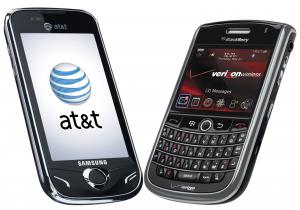U.S. Mobile Operators Plan For 2011 Launch of NFC Payment

U.S mobile carriers Verizon, AT&T and T-Mobile USA hope to launch precommercial trials of their planned mobile-payment service in the third quarter of 2011, sources told NFC Times.
The precommercial launches, in perhaps three to four cities, could use the Zip contactless payment application from Discover Financial Services, stored on either SIM cards or embedded chips in the phones, sources said. Bridge technologies, such as contactless microSD cards, are also possible in addition to the NFC phones. An internal trial of the service could launch in the spring of 2011, though the planning for this and the precommercial launches remains fluid.
As Bloomberg financial news service reported today, the U.S. arm of UK-based Barclays bank would be involved in project as the banking partner. Discover would provide the merchant network.
That follows reports by NFC Times earlier this year of the joint venture among the three telcos and plans to launch a mobile payment service or their own payment scheme. Sprint was earlier involved in the project, as NFC Times first reported in February, but has dropped out. Representatives from the telcos and their expected partners continue to decline comment.
Discover has been seen as a likely partner since it has almost as much merchant penetration as Visa Inc. and MasterCard Worldwide in the U.S., both in terms of total merchant coverage and merchants equipped to take contactless payment from either cards or NFC phones. A relatively small percentage of total card-accepting merchants in the U.S. accept contactless so far, however.
More importantly, Discover appears to be more willing than Visa and MasterCard or their affiliated banks to cut a deal to share interchange and at a lower rate. Interchange revenue appears to be among the main business cases of the telcos for the mobile-payment service. But some observers believe the telcos see a substantial source of revenue from mobile advertising and marketing to their large base of subscribers that would be carrying NFC phones.
The telcos would take on Visa and MasterCard and the big U.S. banks for a share of the billions of dollars worth of interchange fees. UPDATE: But the telcos' joint venture would have to offer lower interchange and, therefore, lower merchant fees to encourage more merchants to accept NFC-based payment, observers believe. END UPDATE. The telcos are likely talking to other American banks besides the Barclays U.S. unit.
"If the reports are accurate, this new payment service would certainly upset a lot of apple carts," Red Gillen, senior analyst at U.S.-based research and consulting firm Celent told NFC Times. “This reported new payment service would undoubtedly spell bad news for Visa, MasterCard and their partner banks, who all along have been the assumed ‘inheritors’ of the U.S. mobile payments space."
It’s not yet certain the type of payment application–credit, debit or prepaid–that mobile carriers and their partners would launch, despite the assertion in the Bloomberg article that debit, along with credit, would be involved.
As Gillen points out, Barclays only issues credit cards in the U.S., through its Barclaycard arm. It does not offer retail banking stateside. Barclays or Discover could issue a credit application for the telcos, or the application might be prepaid, especially to start out with. For debit, Barclays would need to expand its banking operation in the U.S. or the telcos would have to bring in another banking partner. Though unlikely, the parties also could use decoupled debit, which would link the payment application to various bank accounts belonging to consumers. Barclays, as a banking partner for the joint venture, would store funds for customer payment accounts, if they are created and, of course, would help the mobile-payment scheme or service meet U.S. banking regulations. A Barclays spokesman said the bank has about 6 million credit cards on issue in the U.S.
The telcos could offer other applications related to payment, such as loyalty points good for airtime top-ups, or mobile couponing. That is in addition to possibly bringing in other service providers to the NFC platform, which could offer transit, entertainment ticketing or physical access control.
Sources also told NFC Times that while the precommercial launches would happen in a handful of cities, they could not confirm reports that one of those is Atlanta, home of AT&T Mobility. Verizon and AT&T each has more than 90 million cellular subscribers in the U.S.
And the launches might be pushed back to later in 2011. The Verizon/AT&T/T-Mobile joint venture is still looking for a CEO. The telcos also haven’t yet hired a trusted service manager to download and manage the applications over the air. And perhaps the biggest unknown for the project is when enough NFC smartphone models will be available to make NFC launches viable.
Handset makers are working on models supporting Android and Symbian, which should be available next year. Research in Motion is also said to be working on NFC for some of its BlackBerry phones. And anticipation is again running high that Apple will incorporate NFC in its next iPhone. Apple reportedly recently hired a project manager for mobile commerce with a background in NFC.
But it generally takes 12 months or more after U.S. telcos order NFC before they can take delivery. At present, there are only one or two NFC models available for trials outside of China, including the 2G Samsung S5230.
It’s possible the U.S. telcos will not go forward with the mobile-payment service. If they do, much work remains to be completed before the launches.
In any case, interest in the U.S. in NFC among the major telcos is sure to add momentum to rollouts of the technology. Telcos and service providers in South Korea, China, France, the United Kingdom and elsewhere plan commercial launches next year. Together, the projects make it more likely handset makers will have a substantial portfolio of NFC models available for sale.












